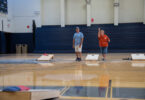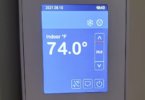The total solar eclipse that will cross the continental United States is happening on Monday, August 21 and without the proper eye wear, it is dangerous for your vision to observe the event.
According to NASA, the only safe way to view the sun, either uneclipsed or during an eclipse, is through special purpose solar glasses, which many stores are out of or in short support. NASA officials said that regular sunglasses will not protect your eyes, whether you are looking at the sun on a normal day or viewing the solar eclipse on August 21.
The upcoming eclipse will make landfall in Oregon. From its initial landfall, it will make its way across the country in about 93 minutes before departing to the Atlantic Ocean near Charleston, South Carolina. The totality is short, but the eclipse will take about two hours to complete its full cycle. In Bristol and the surrounding areas, the eclipse will begin at 1:21 p.m., when the moon makes contact with the sun. At roughly 2:44 p.m., the maximum coverage Bucks County receives, about 80 percent, will be reached. The day will go back to normal at about 4:01 p.m., as the bodies complete the path.
An alternative to using special solar glasses is to view the sun indirectly through the use of a pinhole viewer. A pinhole viewer is a piece of equipment that anyone can easily build with items they likely already have in their home.
Two Parties Will Offer Prime Solar Eclipse Viewing
There are many types of pinhole viewers and ways that can get the same effect. We’ll show you how to build a pinhole viewer out of a cereal box.
What you will need:
- An empty cereal box of medium to large size
- White paper
- Tin foil
- A toothpick or other pinhole sized punch
- Scotch tape
- A sharp knife or blade
Step One:
On either side of the cereal box, cut a hole through which to look inside. The size of the hole should be big enough to look in, but not too big so that excess light can get in.
Step Two:
Measure out enough tin foil to cover about one third of the top of the cereal box. The foil should be taped to the same side as the viewing hole you cut in step one.
Step Three:
Using the toothpick, poke a hole in the center of the tin foil. This should be a clean puncture to allow the sun to shine through.
Step Four:
Open the cereal box from the top and cut out a slim piece of printer paper. Tape this to the back of the box to allow for clean viewing of the projection.
If every step is completed, you will have a handy pinhole viewer for the upcoming eclipse. The Levittown and Newtown areas will not achieve totality, so the viewer will allow viewers to see the phases of the sun as they pass through.
If you do not have the supplies or time to build a viewer, but want the same experience, a colander held up to the sidewalk will create the same effect.















